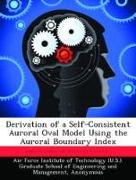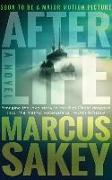- Start
- Derivation of a Self-Consistent Auroral Oval Model Using the Auroral Boundary Index
Derivation of a Self-Consistent Auroral Oval Model Using the Auroral Boundary Index
Angebote / Angebote:
The position and intensity of the auroral oval has many implications for the Air Force from determining the effects of incoming electron flux on DoD systems to modeling the ionosphere to exploit current HF communications capabilities. The auroral morphology is a good indicator of the level at which space weather and its near-Earth consequences are occurring, and thus it is important to develop an auroral prediction model. However, since no purely physics-based models exist to describe the temporal and spatial evolution of the auroral zone, space weather practitioners and researchers are forced to produce statistical representations, "organized" by some relevant geophysical parameter. Currently, the most widely used model is the Hardy et al. (1985) auroral oval model, which is binned according to the Kp index. The Kp index is a mid-latitude measure of planetary geomagnetic activity, and was presumed to be well-correlated to the size and shape of the auroral region. However, subsequent research has shown that Kp is probably not the best binning parameter. This study used the Auroral Boundary Index (ABI) to parameterize the statistics of the auroral oval location since it is a measurement of the electron fluxes computed directly from sensors aboard the DMSP satellites. Thus, the current work represents a move toward a more self-consistent--and presumably more accurate--climatological representation of the auroral oval boundaries. This was accomplished by recreating the process performed by Hardy et al., substituting the ABI for the Kp index and deriving an entirely new set of auroral ovals based on almost 11 years of DMSP data from the F8 and F9 satellites. To quantitatively assess the differences between the two models, electron flux values were compared to actual DMSP data of individual satellite passes. Preliminary findings suggest that the new ABI auroral oval model is, at worst, comparable to the results achieved by Hardy et al. Further refinement of this n mode
Folgt in ca. 15 Arbeitstagen


